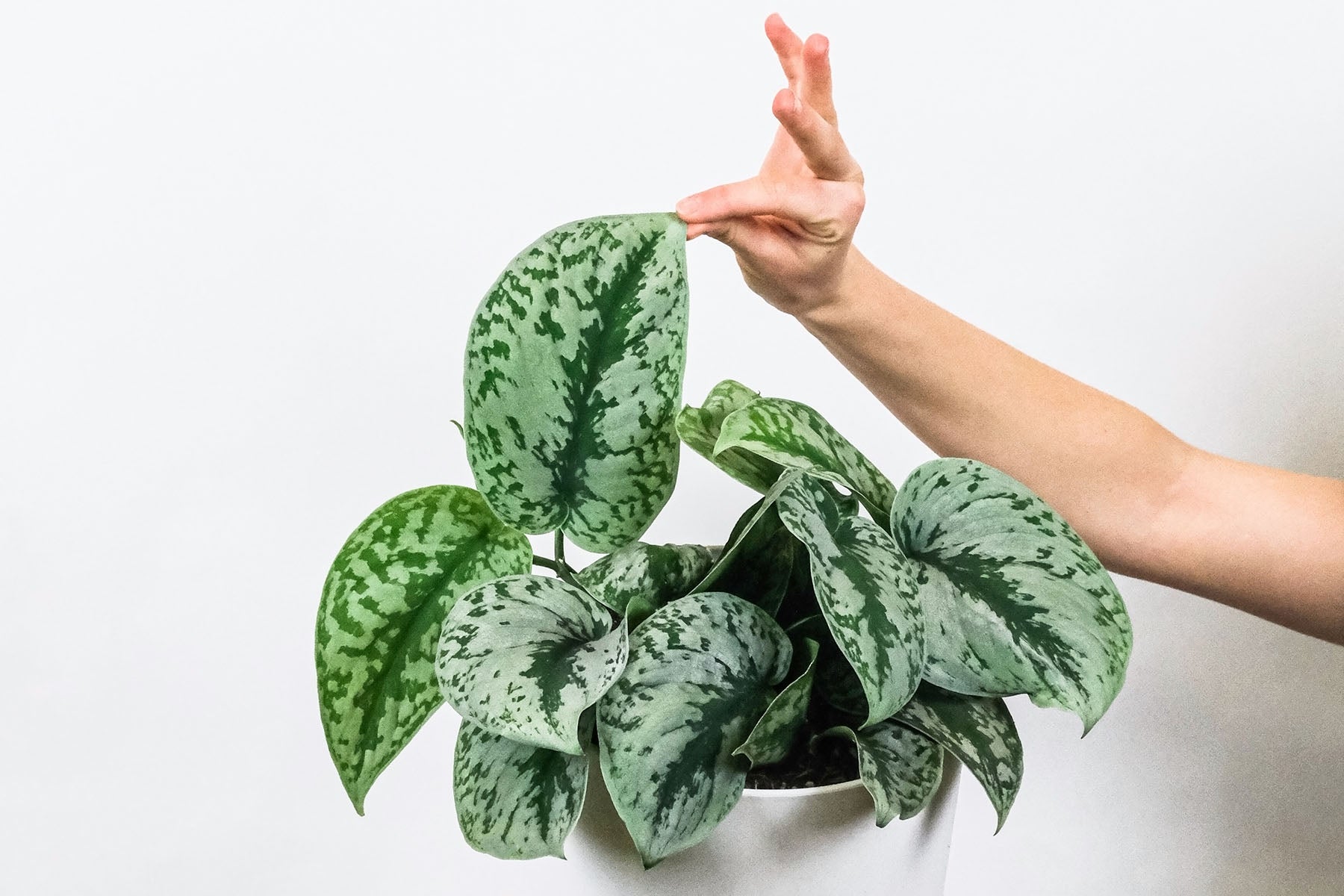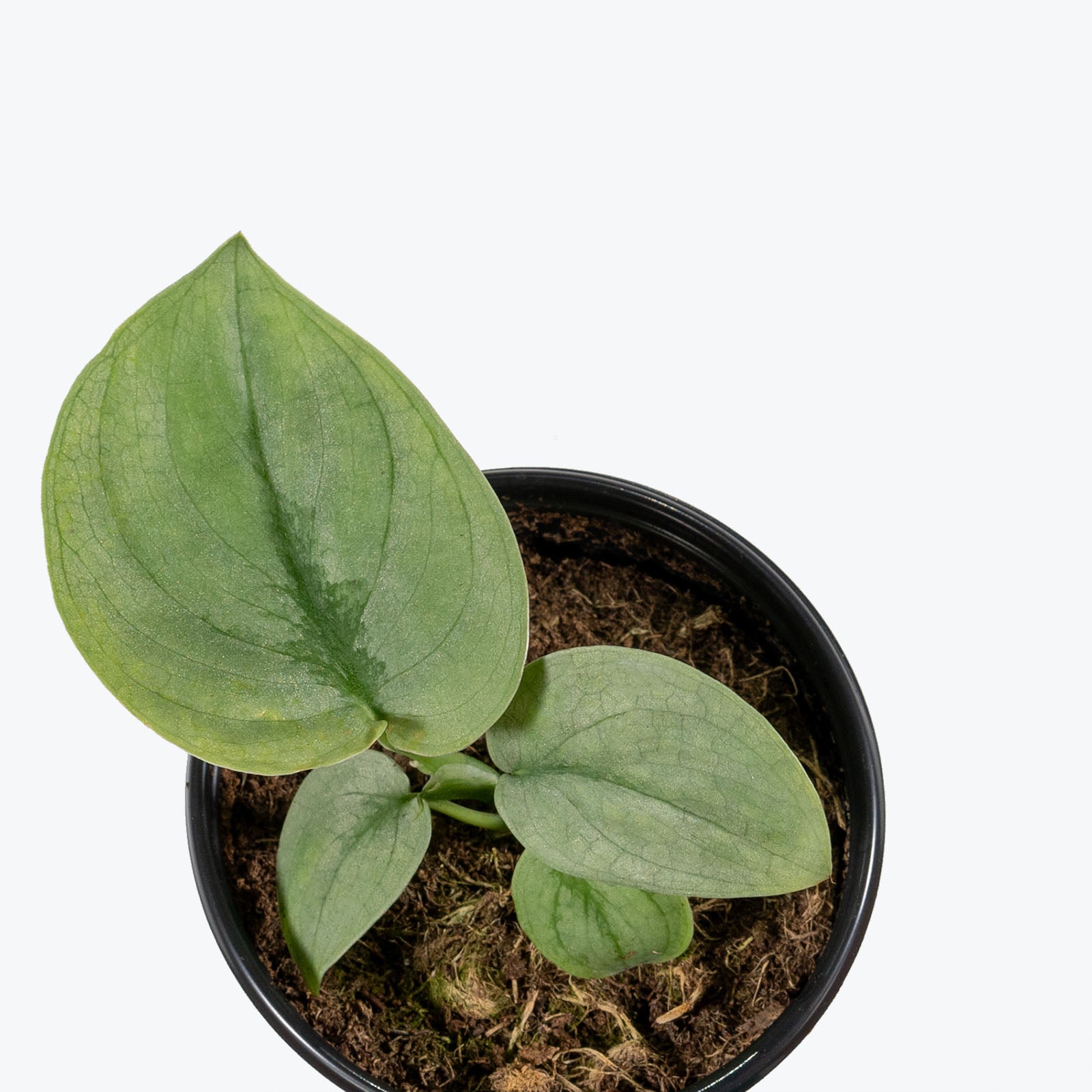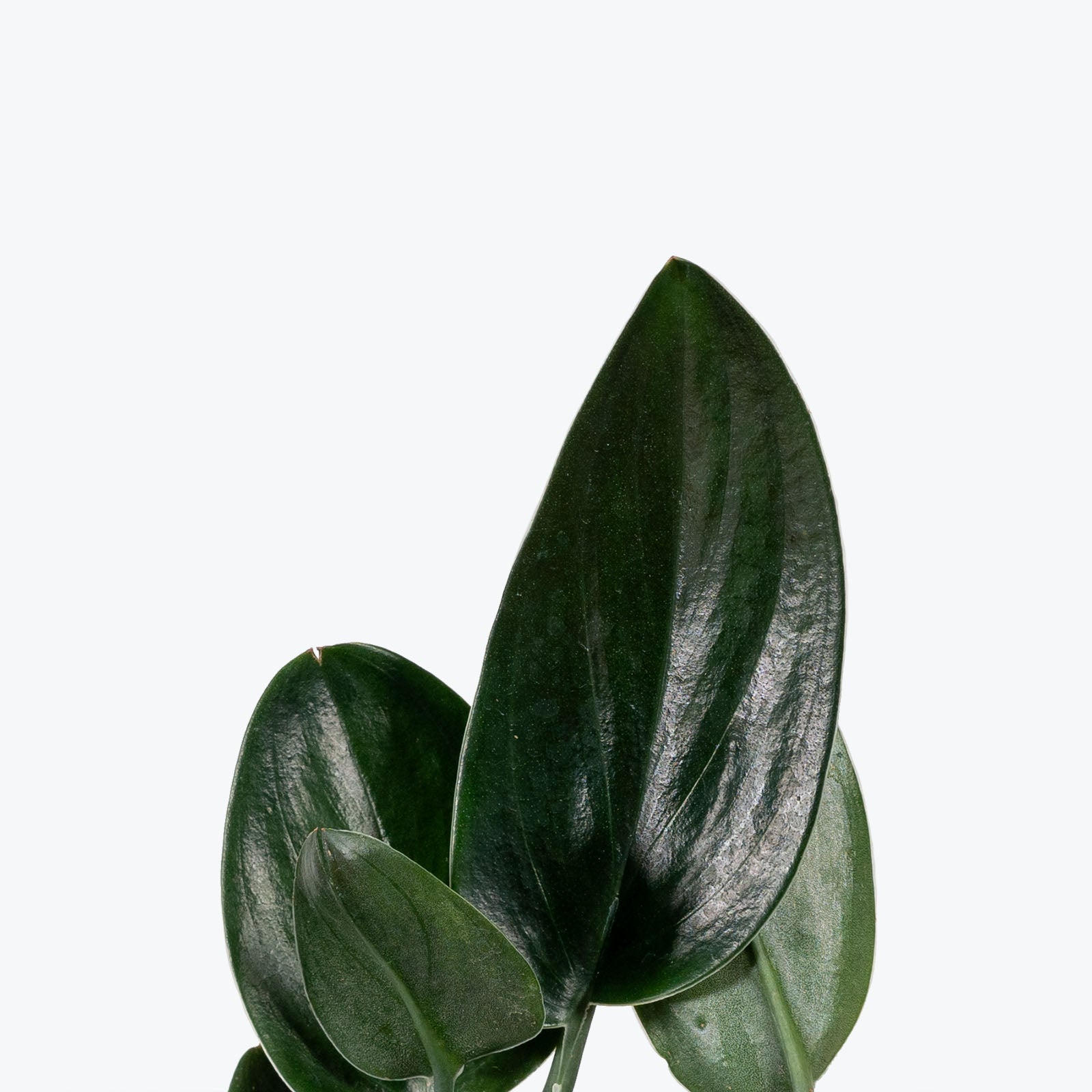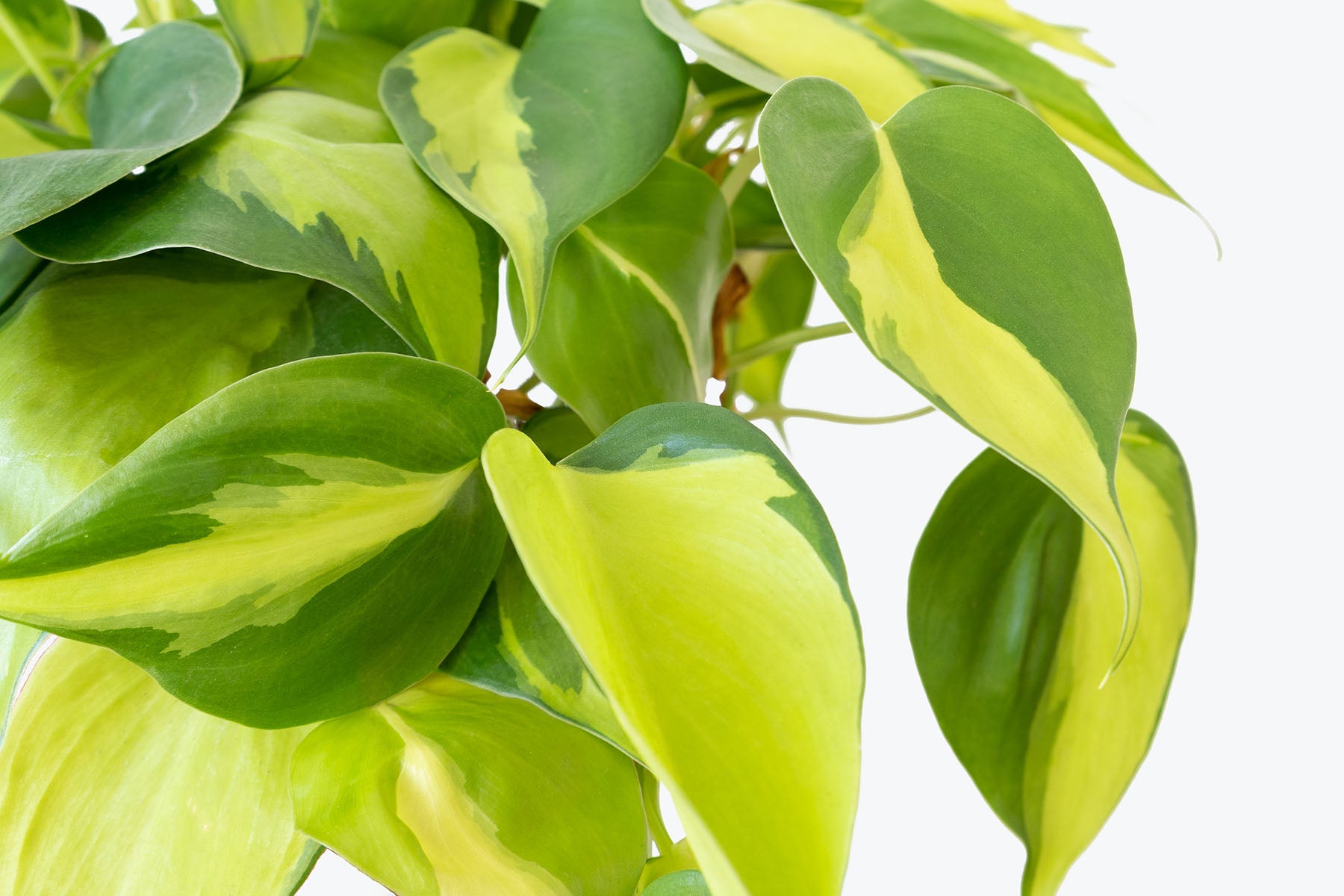
Plant Breakdown: The Difference Between Scindapsus Varieties
So you're a little confused about which Scindapsus variety is which? Join the club! With all the varieties that exist, each with slightly different variegation, leaf shape, or leaf texture from the next, it's no wonder we get some of these varieties mixed up with each other. This guide will help sort out some of that confusion because this is a genus that you certainly want to have one of each of.
Often classified under the over-arching name of Silver Satin Pothos (they were originally classified in the Epipremnum genus), the Scindapsus genus has some varieties that are almost Philodendron-like and others that are Pothos-like, neither of which are botanically a Philodendron or Pothos. Hence why this genus of plants can be so confusing to plant parents, since they are so closely associated with other genera (i.e. Philodendron or Epipremnum/Pothos). The most common species within the genus are Scindapsus pictus and Scindapsus treubii, each breaking down even further into specific varieties, which we will go over now!
Scindapsus Pictus
S. pictus is most often broken down into the following varieties: S. pictus 'Exotica,' S. pictus 'Argyraeus,' S. pictus 'Silvery Hero,' S. pictus 'Silvery Ann,' S. pictus 'Silver Splash,' and S. pictus 'Silver Lady'. Although there are other varieties that exist, they are very rare and difficult to come by, so we have only included the most common in this breakdown. Even though they are the most common, and often the most confusing since there are a lot of similarities, they are also quite different in their own ways. Let's break down each variety, based on colouring, variegation type, leaf shape, texture, and more:

Scindapsus pictus 'Exotica'
A stunning variety, the Exotica is an incredible houseplant, often referred to as Satin Pothos or Silver Satin Pothos (even though it is not a Pothos at all). With thick, broad leaves, almost as stiff as cardboard, and the majority of each leaf covered in silver, their foliage can grow to be the size of your hand! The asymmetrical shape of each leaf, hooked slightly off-kilter at the bottom tip, adds to their unique appearance.

Scindapsus pictus 'Silver Splash'
Very similar to the Exotica, the Silver Splash variety has variegation that is dappled, rather than streaked, and the silver is also much more muted. That being said, the leaves are just as large, thick, and impressive as the Exotica leaves, but have a more silvery-blue appearance. Although not as bright and vibrant as other Scindapsus varieties, this variety is still so beautiful.

Scindapsus pictus 'Jade Satin'
Another species with broad, thick, cardboard-like leaves, the Jade Satin variety is very similar to the Exotica and Silver Splash in leaf shape and texture, but with absolutely no silver. The incredible leaves are a rich, deep green, especially along the veins, with some slightly lighter green streaked throughout. In the right light and angle, they have a slight sheen, making their dark foliage quite mesmerizing.

Scindapsus pictus 'Argyraeus'
With smaller, delicate, heart-shaped leaves, the Argyraeus is known as Silver Philodendron (even though, again, it is not a part of the Philodendron genus). Its foliage is much softer than the Exotica, with dark green, iridescent leaves splattered with silver, which results in much sparser variegation. If given support, it can grow on walls or totems, but they are usually grown as a trailing plant in the home.

Scindapsus pictus 'Silvery Ann'
Just like the Argyraeus, Scindapsus 'Silvery Ann' has softer foliage, with the classic Scindapsus hook at the bottom tip of its leaves, giving the usual asymmetrical shape. However, this variety has much strong silver variegation, some leaves even looking as though they have been dipped in silver paint. Generally, at least half of each leaf is covered in shiny silver and then the rest is speckled with it, some leaves even being completely silver.

Scindapsus pictus 'Silver Hero'
A harmonious blend of bold and subtle, the 'Silver Hero' is a standout in the Scindapsus family. Its leaves are large, akin to the 'Exotica', but with a distinctive silver variegation that streaks across the deep green foliage like a brushstroke. This variegation style, combining broad silver areas with a dark green backdrop, gives each leaf a dramatic, yet elegant appearance. The classic Scindapsus leaf shape, complete with an asymmetrical hook, is beautifully outlined in silver, making 'Silver Hero' a perfect blend of artistry and nature.
Scindapsus pictus 'Silver Lady'
Almost a cross between Exotica and Argyraeus, the Silver Lady has leaves that are not as large as the Exotica but not as small as the Argyraeus. The variegation is also quite unique, like the reverse of the Argyraeus with the majority of the leaf being silver with small splotches of green. There is also a fine line of silver outlining each leaf, following the classic asymmetrical shape and hook.
Scindapsus Treubii
Next up, the Scindapsus treubii varieties. The easiest varieties to find are S. treubii 'Moonlight' and S. treubii 'Dark Form,' even though they are still quite rare at this point in time. Unlike the S. pictus varieties, treubii don't necessarily have the typical hooked and curved leaves, with less asymmetry as well. They also tend to have much more glossy, solid-coloured foliage, rather than iridescent and variegated. Let's break them down by species:

Scindapsus treubii 'Moonlight'
The most accessible of the two treubii varieties available, Moonlight is a stunning houseplant, with milky-green leaves having a central, dark green vein and outer edging. This fantastic vine is quite slow-growing but an elegant addition to your home, with those thick, glossy leaves it certainly makes a statement.

Scindapsus treubii 'Dark Form'
If you have ever been looking for a houseplant that is almost black in appearance, look no further. Even though it is essentially just a very, very dark green, the almost-black foliage is incredibly glossy, without any sort of variegation present. The Dark Form is still quite rare and very hard to come by at this time, not to mention expensive.
Now that we have outlined the most popular or readily available Scindapsus varieties, you can start identifying what you have and figuring out what they need. Below, you can find a quick care guide that goes over the basic care instructions for these stunning houseplants, as not only are they beautiful, but they are quite simple to care for and enjoy as well.
Scindapsus Care Guide
Lighting:
Most varieties can handle almost all light levels, although they do prefer bright, indirect light over low light. The brighter the light your plant receives, the more full and compact your plant will remain, with large foliage and minimal spacing in between the leaves on each vine. The majority of them are also relatively slow growers, so lower light will lead to even slower growth.
Watering:
In the spring/summer months, water your plant fully when the soil is half dry, but in the winter months, water your plant when the soil is almost completely dry. Scindapsus will not tolerate too much water, so avoid keeping the soil overly moist or soggy. To best gauge when it is time to water your plant, wait until the leaves are slightly curled, which is an indication that it is thirsty!
Humidity:
Most Scindapsus varieties are very low-maintenance, not requiring constant attention and the majority of light levels. This also includes their humidity needs, where they can live in average home humidity conditions and are fairly hardy. That being said, they will always appreciate some humidity, so mist your plant daily or keep them around a humidifier.
Fertilizing:
They make it very simple, fertilize with a balanced liquid fertilizer once a month during the growing season (i.e. May - August).
Toxicity:
Since they are toxic to both humans and pets, due to the calcium oxalate crystals that all parts of the plant contain, Scindapsus are best kept away from children and animals.
Propagating:
Although they can be propagated, just remember that they are slow growers, so be patient. The one exception is Scindapsus pictus 'Argyraeus', as they are quite rapid growers, similar to Heartleaf Philodendrons. The best way to propagate would be by water propagation or soil propagation. Use clean sheers to snip off a vine, with at least 2 leaves, and remove the leaf on the node closest to the cut end, unless there is already an exposed node. This node will be placed in the soil or water, as that is where the new roots will grow from. Then, wait for roots to form! With these cuttings, you can either make the original plant more full or you could start a whole new plant.
Since a lot of the above varieties are commonly associated with the Silver Pothos or Silver Philodendron name, it is no wonder why this genus of plants can be so confusing to plant owners! We hope this clears up any questions you may have had about these beautiful houseplants. No matter how similar the different varieties look, they all have their own slightly different growth pattern or variegation, so just because you own one, that doesn't mean you don't need them all!






